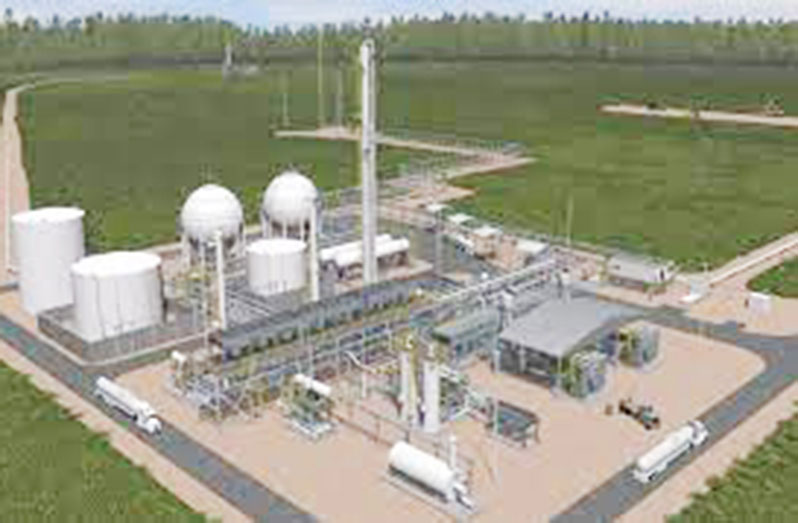WITH government continuing to invest significantly in the energy sector through massive projects like the gas-to-energy one and the highly-anticipated Amaila Falls Hydropower Project (AFHP), Guyanese could be benefitting from a significant reduction in energy cost by 2025.
In the 2022 budget, the government has allocated an incredible $29.4B to the energy sector. This allocation has been touted as one of the first steps to rapidly accelerate Guyana’s transition to cleaner sources of energy, while boosting its capacity to meet the growing demand for affordable and stable electricity over the next five years.
Prime Minister Brigadier (ret’d) Mark Phillips had previously told the media that the government is committed to providing affordable, stable and reliable energy, and that Guyana’s policy to develop a low-carbon and climate-resilient economy is outlined in the country’s Low-Carbon Development Strategy (LCDS), which mandates maintaining low deforestation rates and the sustainable use of resources over generations.
Additionally, he said that the government is committed to exploring all possibilities for the use of natural gas for electricity production.
The Prime Minister said, too, that Latin America and the Caribbean can ensure energy access and inclusiveness as an integral part of recovery measures, through improved data collection and knowledge sharing, support for investment promotion, access to grant funding and concessional financing, and the sharing of policies and programmes, among other initiatives.
In just this year’s budget, a hefty sum has been allocated to run several projects that bring the government one step closer to its goal. Included in the 2022 budget is the allocation of $20.8 billion for the gas-to-energy project.
In September 2021, following a public expression of interest, the government issued an advertisement for the pre-qualification of firms interested in the transformational gas-to-energy project, in recognition of the potential of natural gas as a transition fuel.
The project, which is expected to allow the government to phase out the use of expensive and carbon-intensive heavy fuel oil, encompasses the establishment of a power plant to generate 300 megawatts (MWs) of power, as well as a Natural Gas Liquids (NGL) plant, and will cover domestic demand, and enable the government to reduce costs, substantially, below the current levels.
The project also includes the construction of a 225km 12” pipeline to transport the guaranteed minimum of 50 mmcfd of natural gas from offshore Guyana to the Wales Development Authority.

ALREADY COMPLETED
Several portions of the ongoing geotechnical and geophysical works for both offshore and onshore operations have already been completed, and by the second quarter of 2022, an environmental and social impact assessment is expected to be completed as well. Construction on the power plant and NGL is expected to commence in the third quarter of 2022, with an estimated completion timeline of the fourth quarter of 2024.
Additionally, significant finance from the budget will be going towards several additional projects which are expected to improve citizens’ access to reliable, affordable, and clean energy.
For 2022, $1.6 billion has been budgeted for the construction of a parallel transmission line linking the Kingston and the new Sophia substations, as well as the upgrading of the existing L5 transmission line. This project is intended to reduce transmission losses, and maintain desired system voltage levels.
Additionally, $1.1 billion of the sector’s budget is earmarked for solar farm interventions in 2022. These include the completion of the 1.5MW solar farm at Bartica, the 0.75MW one at Wakenaam, and the 1.0 MW one at Lethem. It is also the government’s intention to tender for a 0.6 MW solar farm at Leguan, and another 0.65 MW one at Mahdia later this year.
Several hinterland areas can expect to benefit significantly from the 2022 budget, as over $450 million has been budgeted for the expansion and upgrading of the hinterland electrification and power generation capacity, through the purchase of generators and the expansion of distribution lines.
Region Nine (Upper Takutu-Upper Essequibo), in particular, is set to see increased energy production.
Also, over $170 million has been budgeted for the completion of the 150KW hydropower scheme at Kato, and 30,000 photovoltaic home systems for hinterland and riverine areas.
The government has contended that this solar mini-grid and off-grid solutions are the country’s most viable options to ensure unserved and underserved hinterland regions are energised.
Meanwhile, the government, throughout 2022, will be distributing and installing, for free, over 22,000 LED bulbs and over 12,000 LED tubes at homes, business places and government buildings at Bartica, Linden, Leguan, and Wakenaam.
The initiative, which is anticipated to remove over 500 tonnes of carbon dioxide emissions from the environment, is part of the government’s plans to reduce the country’s carbon footprint.




.png)









